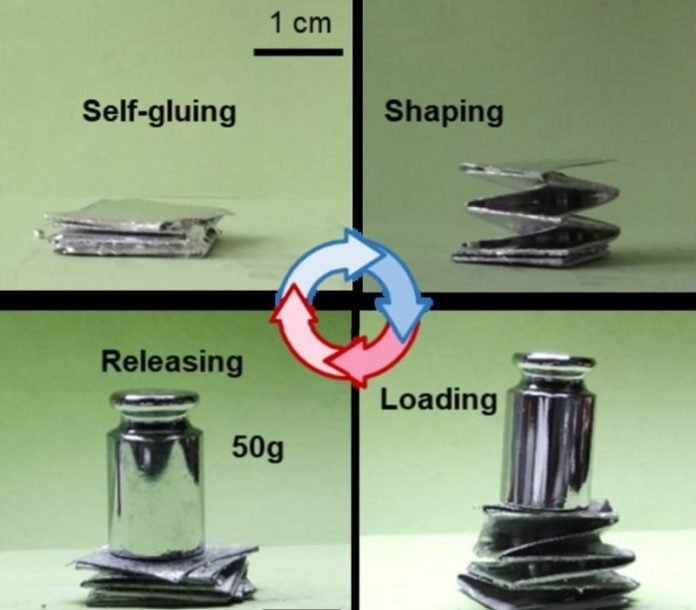
Researchers in China have developed a fascinating new method to coat everyday materials like paper and plastic with liquid metal, potentially turning them into “smart” electronic devices.
This groundbreaking study was published in the journal Cell Reports Physical Science.
Up until now, it was a real challenge to get liquid metal to stick to surfaces that it doesn’t naturally bond with. However, the scientists led by Bo Yuan from Tsinghua University have discovered that by carefully controlling the pressure, liquid metal can indeed stick to these surfaces.
Liquid metal has a high surface tension, which means it doesn’t easily mix or bond with other materials, and this has made it very hard for scientists to use it with traditional materials like paper.
Previous research tried to get around this problem by using a third material to stick the liquid metal to the surface – a method called “transfer printing”. However, this added complexity to the process and could lower the final product’s electrical, thermal, or mechanical properties.
To find a better solution, Bo Yuan and his team tried a new approach.
They used two different types of liquid metal and spread these on silicone stamps. They then used the stamps to rub the liquid metal onto paper surfaces, applying different amounts of force.
At the start, the team faced difficulties ensuring the liquid metal coating stuck to the paper. But after some trial and error, they found that applying a small amount of force was just right. Too much force, and the metal droplets didn’t stick.
They then folded the liquid metal-coated paper into a paper crane, showing that the paper still folded as usual. The paper also kept all its regular properties even after being coated with liquid metal.
However, the scientists are still working out how to make sure the liquid metal stays on the surface once it’s been applied. At the moment, they’re using a packaging material to protect the surface, but they’re hoping to find a simpler solution.
Bo Yuan compares the current situation to wet ink on paper, which can be wiped off if you touch it. The same is true for their liquid metal coating – it can be wiped off by the object it touches, potentially causing a mess.
The team’s future plans include applying liquid metal to other types of surfaces like metal and ceramic. They also plan to use this method to create smart devices.
This exciting research opens the door to transforming common materials into interactive electronic devices, bringing us a step closer to a future where smart paper and plastics are part of everyday life.
Source: KSR.



